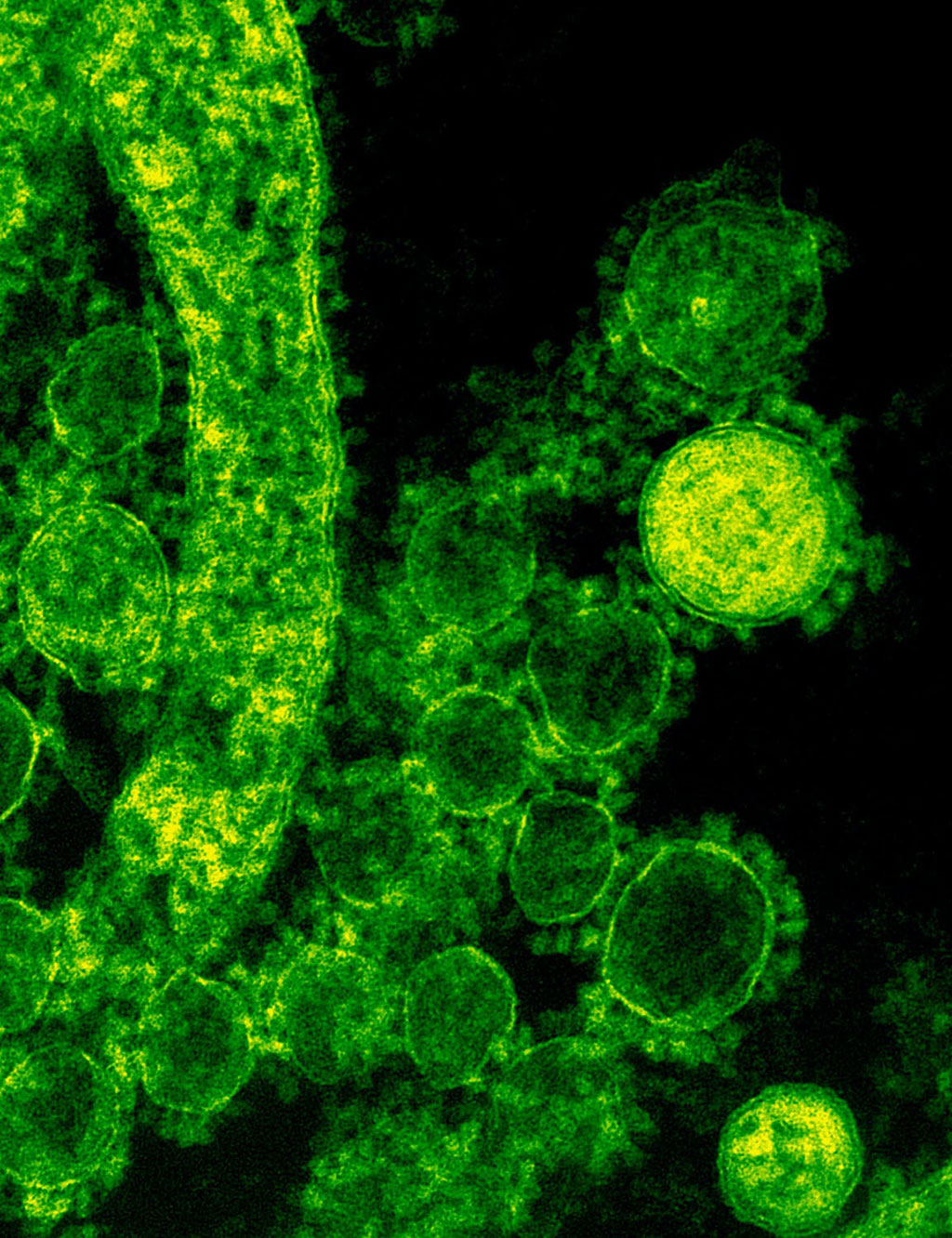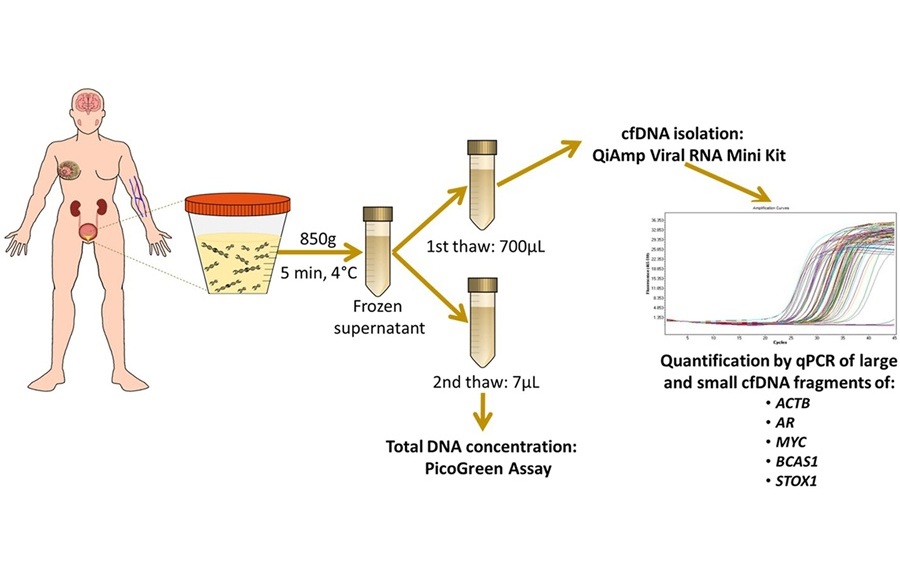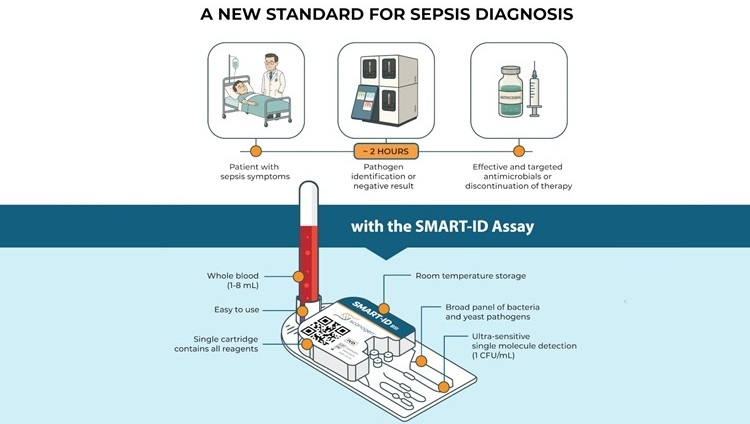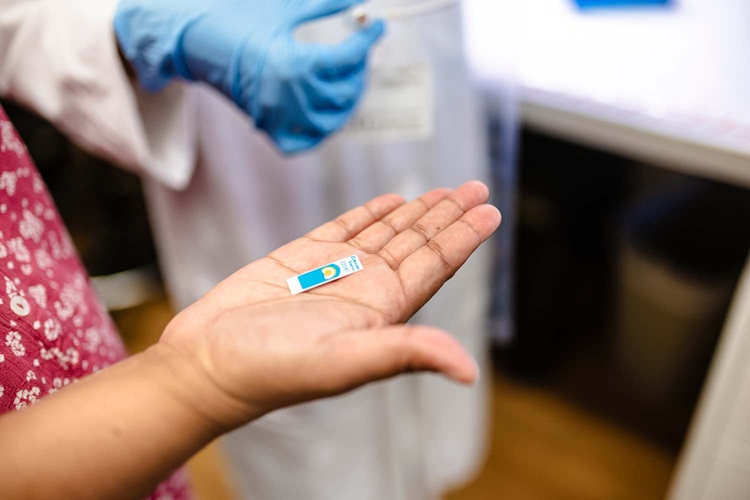Standard Blood Cancer Test Provides Clues of Rare IgD Multiple Myeloma
|
By LabMedica International staff writers Posted on 20 May 2022 |

IgD myeloma accounts for about 1% of common blood cancer multiple myeloma and has a worse prognosis. Specific testing for IgD myeloma is available at a handful of reference labs across the US, but takes extra time and expense that may not be necessary and likely will delay the start of treatment. Now, investigators have found that a test for multiple myeloma also holds clear clues that the patient has IgD myeloma, one of its most uncommon and deadly forms.
While there is a specific test for this rare IgD multiple myeloma, the clues from standard testing are sufficient to rapidly initiate aggressive treatment to reduce or prevent kidney destruction by the excessive number of circulating proteins called light chains it produces, according to researchers at the Medical College of Georgia at Augusta University (Augusta, GA, USA). With multiple myeloma, the plasma cells that normally produce a wide range of antibodies to help us fight infection instead produce a single dysfunctional antibody, called an M spike, which leaves us vulnerable to infection and can even attack our bones.
Normally the classic Y-shape of the antibody has two light chains, proteins that form the arms of the Y with an antigen-binding site on their tips which is where healthy antibodies attach to whatever they are attacking. Light chains hook up with heavy chains, which are different, literally larger proteins that form the base of the Y. While more light chains are always produced with this blood cancer, particularly with IgD, excessive numbers are produced that don’t pair up with heavy chains per usual and consequently end up moving freely about in the blood and inundating the kidneys, which normally filter about a half cup of blood every minute, according to the National Institute of Diabetes and Digestive and Kidney Diseases.
In a retrospective review of more than 600 patients with multiple myeloma over 20 years at AU Medical Center, the investigators identified only four patients with the rare IgD multiple myeloma. But test findings were consistent in all four and are a red flag to physicians that it’s likely IgD myeloma and that aggressive treatment is urgently needed. For example, one test commonly used in these patients is protein electrophoresis, which enables the investigators to look in detail at what plasma cells are making based on their unique electrical charge. In all four patients with IgD myeloma, the investigators found multiple bands that reflect both those dysfunctional antibodies and the excessive light chains characteristic of this type of multiple myeloma, rather than just the single, solid band of color that depicts the M spike. They also consistently indicated more of a specific type of light chain, called lambda.
These patients had a mortality rate nearly three times that of patients with other forms of this blood cancer, according to the investigators. They had higher rates of kidney damage and dialysis among the 600 patients whose course was reviewed. IgD-specific testing looks at the heavy chains, to give a more complete picture of the disease, similar to how a urine analysis that turns up a gram-negative bacterium. The patient will go ahead and start an antibiotic course but will still be given a test to determine the specific bacterium. Like that test for a specific bacterium, an IgD specific test typically won’t alter, only delay treatment. The next steps should include clinical trials, comparing patient outcomes when the IgD specific testing is used and when these earlier indicators serve as clues to get started on treatment. Last year, the last year investigators had reported that patients who produce these excessive levels of free light chains could benefit most from early identification and interventions potentially including plasmapheresis to remove some of the circulating light chains from the blood, and dialysis to help the kidneys filter them.
“Light chains are small, get filtered by the kidneys and end up in the renal tubules,” Singh says, referencing the tiny tubes where the kidneys resorb nutrients, fluid and other substances filtered from the blood and which can be rapidly injured. You need to act quickly,” said Dr. Gurmukh Singh, vice chair of clinical affairs for the Department of Pathology at the Medical College of Georgia. “Dialysis with a special filter to capture light chains can prevent kidney damage and chemotherapy can further reduce the number of damaging light chains.”
Related Links:
Augusta University
Latest Hematology News
- Platelet Activity Blood Test in Middle Age Could Identify Early Alzheimer’s Risk
- Microvesicles Measurement Could Detect Vascular Injury in Sickle Cell Disease Patients
- ADLM’s New Coagulation Testing Guidance to Improve Care for Patients on Blood Thinners
- Viscoelastic Testing Could Improve Treatment of Maternal Hemorrhage
- Pioneering Model Measures Radiation Exposure in Blood for Precise Cancer Treatments
- Platelets Could Improve Early and Minimally Invasive Detection of Cancer
- Portable and Disposable Device Obtains Platelet-Rich Plasma Without Complex Equipment
- Disposable Cartridge-Based Test Delivers Rapid and Accurate CBC Results
- First Point-of-Care Heparin Monitoring Test Provides Results in Under 15 Minutes

- New Scoring System Predicts Risk of Developing Cancer from Common Blood Disorder
- Non-Invasive Prenatal Test for Fetal RhD Status Demonstrates 100% Accuracy
- WBC Count Could Predict Severity of COVID-19 Symptoms
- New Platelet Counting Technology to Help Labs Prevent Diagnosis Errors
- Streamlined Approach to Testing for Heparin-Induced Thrombocytopenia Improves Diagnostic Accuracy
- POC Hemostasis System Could Help Prevent Maternal Deaths
- New Test Assesses Oxygen Delivering Ability of Red Blood Cells by Measuring Their Shape
Channels
Clinical Chemistry
view channel
Chemical Imaging Probe Could Track and Treat Prostate Cancer
Prostate cancer remains a leading cause of illness and death among men, with many patients eventually developing resistance to standard hormone-blocking therapies. These drugs often lose effectiveness... Read more
Mismatch Between Two Common Kidney Function Tests Indicates Serious Health Problems
Creatinine has long been the standard for measuring kidney filtration, while cystatin C — a protein produced by all human cells — has been recommended as a complementary marker because it is influenced... Read moreMolecular Diagnostics
view channel
Simple Urine Test to Revolutionize Bladder Cancer Diagnosis and Treatment
Bladder cancer is one of the most common and deadly urological cancers and is marked by a high rate of recurrence. Diagnosis and follow-up still rely heavily on invasive cystoscopy or urine cytology, which... Read more
Blood Test to Enable Earlier and Simpler Detection of Liver Fibrosis
Persistent liver damage caused by alcohol misuse or viral infections can trigger liver fibrosis, a condition in which healthy tissue is gradually replaced by collagen fibers. Even after successful treatment... Read moreImmunology
view channel
New Test Distinguishes Vaccine-Induced False Positives from Active HIV Infection
Since HIV was identified in 1983, more than 91 million people have contracted the virus, and over 44 million have died from related causes. Today, nearly 40 million individuals worldwide live with HIV-1,... Read more
Gene Signature Test Predicts Response to Key Breast Cancer Treatment
DK4/6 inhibitors paired with hormone therapy have become a cornerstone treatment for advanced HR+/HER2– breast cancer, slowing tumor growth by blocking key proteins that drive cell division.... Read more
Chip Captures Cancer Cells from Blood to Help Select Right Breast Cancer Treatment
Ductal carcinoma in situ (DCIS) accounts for about a quarter of all breast cancer cases and generally carries a good prognosis. This non-invasive form of the disease may or may not become life-threatening.... Read moreMicrobiology
view channel
Rapid Diagnostic Test Matches Gold Standard for Sepsis Detection
Sepsis kills 11 million people worldwide every year and generates massive healthcare costs. In the USA and Europe alone, sepsis accounts for USD 100 billion in annual hospitalization expenses.... Read moreRapid POC Tuberculosis Test Provides Results Within 15 Minutes
Tuberculosis remains one of the world’s deadliest infectious diseases, and reducing new cases depends on identifying individuals with latent infection before it progresses. Current diagnostic tools often... Read more
Rapid Assay Identifies Bloodstream Infection Pathogens Directly from Patient Samples
Bloodstream infections in sepsis progress quickly and demand rapid, precise diagnosis. Current blood-culture methods often take one to five days to identify the pathogen, leaving clinicians to treat blindly... Read morePathology
view channel
Tunable Cell-Sorting Device Holds Potential for Multiple Biomedical Applications
Isolating rare cancer cells from blood is essential for diagnosing metastasis and guiding treatment decisions, but remains technically challenging. Many existing techniques struggle to balance accuracy,... Read moreAI Tool Outperforms Doctors in Spotting Blood Cell Abnormalities
Diagnosing blood disorders depends on recognizing subtle abnormalities in cell size, shape, and structure, yet this process is slow, subjective, and requires years of expert training. Even specialists... Read moreTechnology
view channel
Artificial Intelligence Model Could Accelerate Rare Disease Diagnosis
Identifying which genetic variants actually cause disease remains one of the biggest challenges in genomic medicine. Each person carries tens of thousands of DNA changes, yet only a few meaningfully alter... Read more
AI Saliva Sensor Enables Early Detection of Head and Neck Cancer
Early detection of head and neck cancer remains difficult because the disease produces few or no symptoms in its earliest stages, and lesions often lie deep within the head or neck, where biopsy or endoscopy... Read moreIndustry
view channel
Abbott Acquires Cancer-Screening Company Exact Sciences
Abbott (Abbott Park, IL, USA) has entered into a definitive agreement to acquire Exact Sciences (Madison, WI, USA), enabling it to enter and lead in fast-growing cancer diagnostics segments.... Read more























